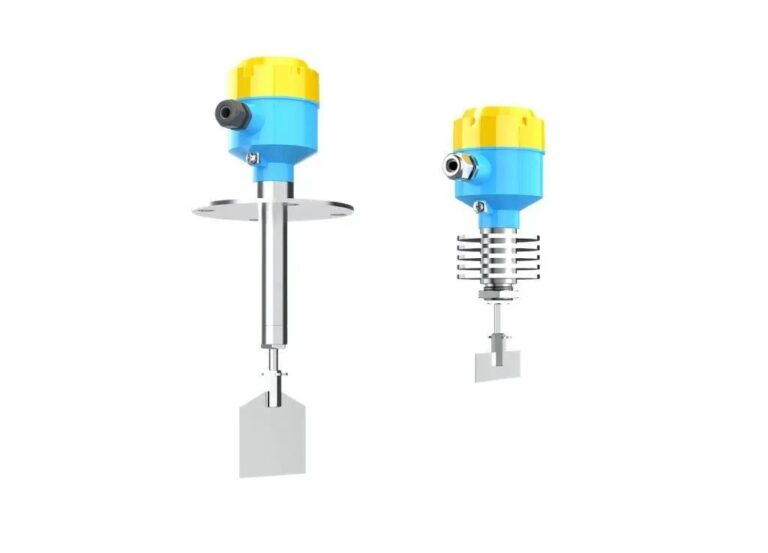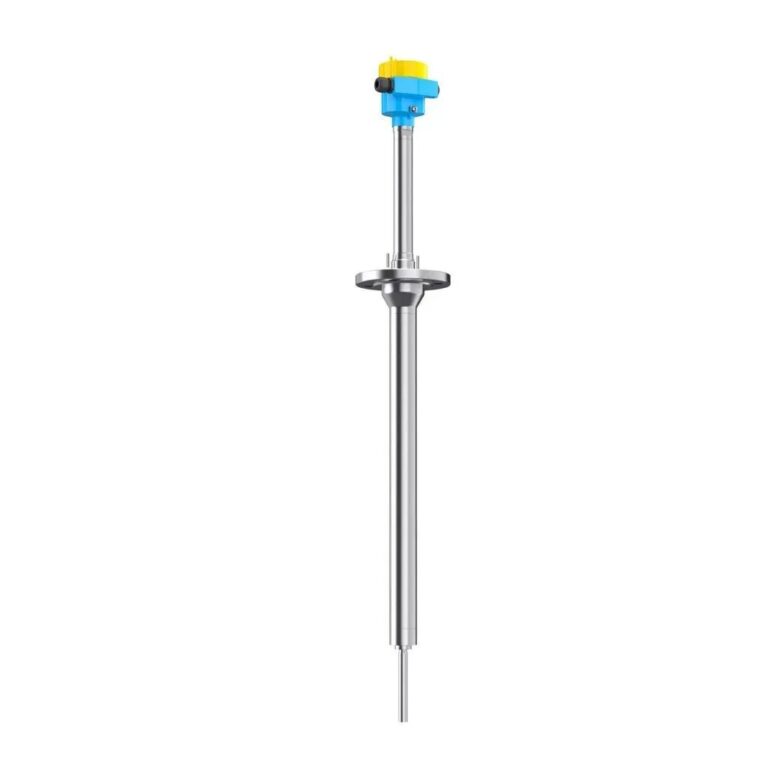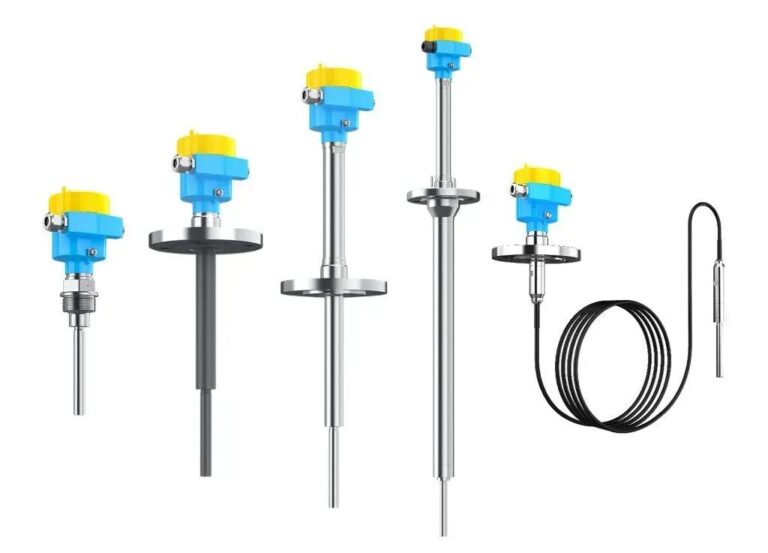When selecting a level switch for solid material measurement, many users wonder: can a rotary paddle level switch replace a vibrating rod level switch? Or vice versa? To answer this question, it’s essential to understand the working principles, advantages, and application scenarios of both devices. This article provides a detailed comparison to guide proper selection.
1. Rotary Paddle Level Switch – Key Features
● Working Principle
A rotary paddle level switch detects material level by sensing the resistance encountered by a rotating paddle. A micro-motor drives the paddle via a gearbox and clutch. When there is no material, the paddle rotates freely. When the material level rises and obstructs the paddle, the rotation is hindered. This causes internal displacement, triggering a microswitch to send a “material present” signal and simultaneously stopping the motor.
As the material level drops, the paddle becomes free to rotate again. A spring resets the mechanism, and the microswitches are triggered in reverse: one reactivates the motor, and the other sends a “material absent” signal.
● Wide Application Range
Suitable for detecting solid materials with a density ≥ 3g/cm³, such as:
Ash, cement, lime powder
Grains, beans, plastic pellets
Resin, metal shavings, sawdust, etc.
● High Reliability
Accurate, quick response to material presence
Resistant to chemical corrosion
Less affected by environmental changes
Offers relay output; supports AC/DC power supply
● Simple Design & Low Maintenance
Mechanically simple structure
Easy to install and maintain
● Protection Rating
Typically rated IP65 — sufficient for environments with water spray

2. Vibrating Rod Level Switch – Key Features
● Working Principle
Vibrating rod level switches operate based on the vibration of a cantilevered rod driven by piezoelectric elements. When the probe is in free space, it vibrates at a specific amplitude. When it contacts material, the amplitude decreases. This change is analyzed by internal electronics to determine material presence and send a switch signal.
● High Sensitivity & Versatility
Can detect materials with density as low as 0.02g/cm³
Not affected by dielectric constant or conductivity
Ideal for:
Fine powders (PVC, sugar, flour, dust)
Granules (grain, beans)
Light bulk solids (sawdust, straw pellets)
● Anti-Caking & Self-Cleaning
Continuous vibration prevents material from sticking
Suitable for sticky or clumping materials
● Excellent Corrosion Resistance
Probe typically made from stainless steel
● Protection Rating
Commonly IP66/IP67 — suitable for strong spray or brief immersion
● Flexible Signal Output
Relay and 2-wire output available
AC/DC dual-use for easier wiring

3. Side-by-Side Comparison
| Feature | Rotary Paddle Level Switch | Vibrating Rod Level Switch |
|---|---|---|
| Working Principle | Detects material by paddle resistance | Detects material by vibration damping |
| Minimum Detectable Density | ≥ 3g/cm³ | ≥ 0.02g/cm³ |
| Sensitivity | Medium | High |
| Suitable Material | Granules, dense solids | Powders, granules, light solids |
| Anti-Sticking | No | Yes |
| Protection Rating | IP65 | IP66/67 |
| Output | Relay, AC/DC optional | Relay or 2-wire, AC/DC combined |
| Installation & Cost | Simple, low-cost | Higher precision, higher cost |
4. Can They Replace Each Other?
In specific scenarios, a rotary paddle level switch can replace a vibrating rod level switch, especially when measuring:
Dense, free-flowing materials (e.g. lime, coal, cement)
Materials not prone to sticking
Applications with low sensitivity requirements
However, in the following conditions, a vibrating rod switch is clearly superior and not replaceable:
Measuring low-density powders (e.g. sawdust at 0.1g/cm³)
Environments requiring high ingress protection (IP66/IP67)
Applications needing high detection sensitivity
Applications where anti-sticking performance is crucial
In short:
✅ A vibrating rod switch can replace a rotary paddle switch in almost all scenarios
❌ A rotary paddle switch can only replace a vibrating rod switch in limited conditions
5. Selection Guide
| Application Scenario | Recommended Switch | Reason |
|---|---|---|
| High-density granules (≥3g/cm³) | Rotary paddle | Simple, cost-effective |
| Low-density powders (<0.3g/cm³) | Vibrating rod | High sensitivity |
| Sticky materials prone to caking | Vibrating rod | Vibration prevents buildup |
| Corrosive environment | Vibrating rod | Stainless steel probe |
| High reliability required | Vibrating rod | Stable performance |
🔧 Example: Tube-11 Vibrating Rod from Zero Instrument
Zero Instrument’s Tube-11 vibrating rod level switch offers highly sensitive detection for solids with density as low as 0.02g/cm³. It’s ideal for challenging applications where rotary paddle switches are not viable. With IP66-rated housing, stainless steel probe, and 2-wire output, it ensures safe and stable operation in demanding industrial environments.

Conclusion
Both rotary paddle and vibrating rod level switches are useful tools for solid level detection, but their optimal application scenarios differ. Rotary paddle switches are reliable, economical choices for dense materials. Vibrating rod switches offer superior performance across a wider range of materials, including light powders and sticky substances.
For general-purpose use and higher accuracy, vibrating rod level switches are often the better choice — and they can fully replace rotary paddle switches when needed.
Let application requirements — material density, environment, sensitivity, and budget — guide your selection.
